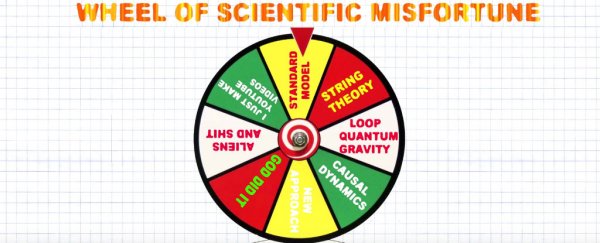There's a major conundrum in physics right now, and it involves our fundamental understanding of the Universe and the entire basis of everything that exists, NBD.
There are two very robust theories that hold up incredibly well when it comes to describing why the Universe is the way it is - Einstein's theory of general relativity, and quantum field theory - but they don't agree with each other. They appear to be right on their own, but wrong together, and that's a problem.
Rather than having two very clever but competing theories to explain the Universe, we need just one: the theory of everything.
Physicists have been trying to figure out how general relativity could agree with quantum field theory, and vice versa, for decades, but it's been anything but easy, as this video from YouTuber exurb1a explains. (Language warning: he swears a lot.)
So let's go back to basics. We've got general relativity, which describes our Universe on the assumption that gravity is a geometric property of spacetime. This means that space and time can be distorted, and we can see this when something massive like two black holes merging creates ripples in spacetime that appear as gravitational waves.
Quantum field theory, on the other hand, describes the Universe based on the behaviour of the subatomic particles that make up everything in existence.
One example of how they don't add up is black holes, and the so-called information paradox that's been driving Stephen Hawking mad since the 1970s.
Basically, black holes swallow a whole lot of matter, but once they get massive enough to collapse under the weight of their own gravity, they 'die', and according to general relativity, everything inside disappears forever. But the laws of quantum mechanics within quantum field theory disagree with this, because they state that information in the Universe can never be destroyed.
Hawking's been performing some very complicated theoretical physics acrobatics to try and come up with a solution to this paradox, but we're not there yet, and here's the scary part - that's just black holes. We have an entire Universe full of bizarre things to reconcile into a universal law.
As the video above explains, lots of the problems physicists face in trying to come up with a compatible theory of everything is the Standard Model - you know, that thing a rumoured new particle might break in the coming weeks.
The major problems in our understanding go like this:
1. Symmetry: if you peer down to its deepest, most basic structures, nature is fundamentally symmetrical, but we can't explain why. To put it another way, there are many examples in the Universe where laws of physics are symmetric, but the state of the system is not.
2. Dark matter: Basically, when we weigh the Universe, there's a whole lot of matter that goes unaccounted for. We currently have no idea where all this weight comes from, so we refer to this entire blank, unexplained something that makes up around 27 percent of the Universe's total mass and energy 'dark matter'.
As NASA explains: "It turns out that roughly 68 percent of the Universe is dark energy. Dark matter makes up about 27 percent. The rest - everything on Earth, everything ever observed with all of our instruments, all normal matter - adds up to less than 5 percent of the Universe."
3. Gravity: Scientists have tried to reconcile general relativity with quantum field theory by proposing that there's an undiscovered particle called the graviton, which carries the force of gravity. But so far, attempts to extend the Standard Model or other quantum field theories by adding in hypothetical gravitons have run into some serious theoretical difficulties.
"What we need is a theory of everything that explains gravity and dark matter, and reunities relativity with quantum mechanics, and does a little backflip for a cheeky encore," says the video above.
Scientists have come up with a few explanations for what they think this theory of everything could involve, but I'll let exurb1a run you through those.
Just remember, this is fast and hilarious stuff, but only gives you a very basic glimpse of what's actually going on here, so you'll probably find yourself stuck in rabbit hole of string theory definitions and Michio Kaku in-jokes before you even get to the end of the video. But I can think of a lot worse things to do with my day.
H/T: Digg
